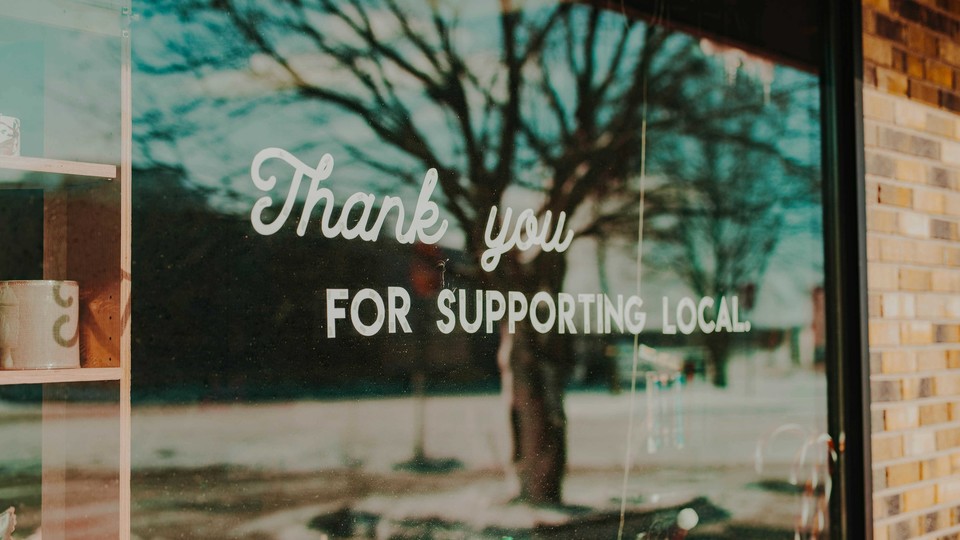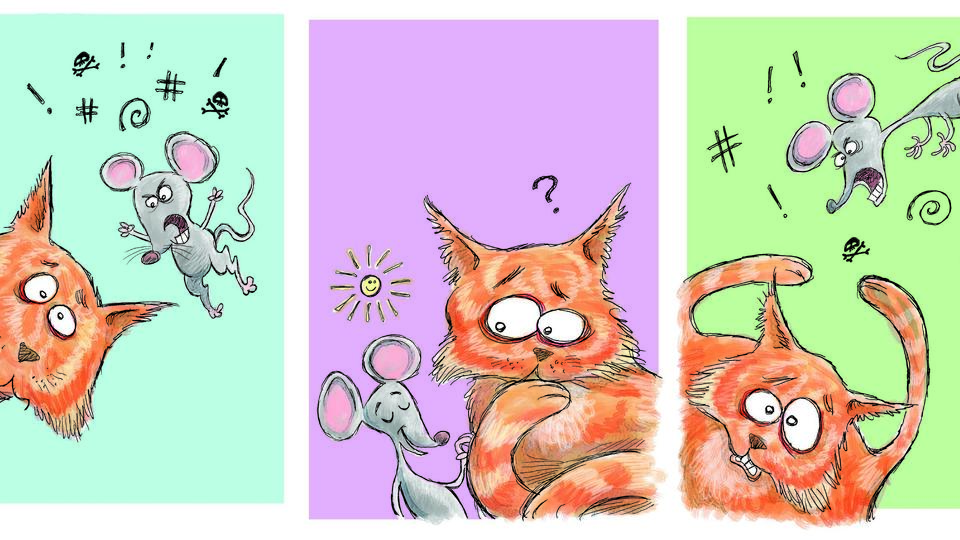Great Expectations
When a school’s reputation gets tarnished, alumni stay loyal.


Based on research Anastasiya Zavyalova, Mike Pfarrer, Rhonda K. Reger and Timothy Hubbard
When A Respected School’s Name Is Tarnished, Non-Alumni Cut Giving While Alumni Stay Loyal
- Research findings about the effects of a good reputation after a negative event have been mixed.
- According to some findings, a sterling reputation builds a useful stock of goodwill; according to others, a good name is a burden because it raises expectations that can be dashed.
- New research shows how this works. A good reputation helps a university that’s in trouble when the stakeholders identify personally with it – and harm it if they don’t have a personal link to the school.
It’s easy to think this maxim is a simple key for professional survival. In good times, after all, a sparkling name draws new prospects; in bad times, a history of excellence may earn a second chance. But reputation actually isn’t always the best shield for an organization facing crisis, according to a study coauthored by Anastasiya Zavyalova, an assistant professor in strategic management at Rice Business. Studying the impact of what they call “negative events,” Zavyalova and her team looked at the behavior of donors after the university they helped had a major NCAA infraction. What they found was surprising. The less a stakeholder was emotionally and cognitively bound to the school, the less a good reputation helped.
Instead, for these stakeholders with low identification — weak personal links to the organization — a good reputation undermined their loyalty once that good name was tarnished. Organizations with lower profiles actually lost less of this type of stakeholder loyalty.
Zavyalova’s findings advance a much-debated question on the benefits of reputation. While intuition and grade school teach that a good name is a personal asset, past researchers have found that for organizations, that’s not always so. According to some findings, Zavyalova’s team writes, “A high reputation is a benefit because of the stock of social capital and goodwill it creates.” But other research shows that a sterling reputation makes matters worse when an organization is in trouble. A good name, in some cases, is “a burden because of the greater stakeholder attention and violation of expectations associated with a negative event.” In other words, the disappointment is greater.
To test when a good name helps and when it hinders, Zavyalova and her colleagues studied donor data from 658 U.S. universities. Identifying the donors as “stakeholders,” the researchers analyzed the giving patterns of alumni and non-alumni after a so-called “negative event” — major reported infractions of NCAA rules.
What they found was that non-alumni, or low-identification stakeholders, cut back their giving in greater numbers if the school had a high reputation. (The researchers measured reputation by rankings from U.S. News and World Report). These donors, it turned out, actually proved more loyal to schools with lesser reputations when they ran into NCAA trouble.
A good reputation only helped when the donors were alumni, or in other words, felt a personal link with the school. For these high-identification donors, the writers theorized, “the stock of social capital and reservoir of goodwill” influenced their views. According to previous research, such donors bask in the reflected glory of their school when it’s in the ascendant — and take it personally if negative events threaten the school’s profile. As a result, they may cut the school some slack, attributing the negative event to situational factors.
In fact, the researchers found, high-reputation schools actually got a bump in support from their high-identifying stakeholders after an increase in the number of NCAA violations — at least for awhile. When a “negative event” was too great in magnitude, it appeared to turn these stakeholders against the school as well.
These insights suggest strategies for managers. First, in industries where negative events typically occur in some volume, it may not make sense to cultivate high personal identification at all. Second, since the two types of stakeholders react so differently, a manager of a high-reputation organization might deploy different responses when there are problems. One approach: for low-identification stakeholders, reduce the perceived volume of wrongdoing by publicly sharing plans to address the problem. The high-identification stakeholders might merit another tactic: remind them of their close bond with the organization — and ask for some loyalty during a troubled time.
Anastasiya Zavyalova is an associate professor of management at Jones Graduate School of Business at Rice University.
To learn more, please see: Zavyalova, A., Pfarrer, M., Reger, R., & Hubbard, T. (2015). Reputation as a benefit and a burden? How stakeholders’ organizational identification affects the role of reputation following a negative event. Academy of Management Journal, 59(1), 253–276.
Never Miss A Story
You May Also Like
Keep Exploring
Crazy Like A Fox
Unpredictable negotiating behavior predictably leads to more concessions.


Based on research Hajo Adam (former Rice Business professor), Marwan Sinaceur, Gerben A. Van Kleef and Adam D.Galinsky
Unpredictable Negotiating Behavior Predictably Leads To More Concessions
- Purely hard-nosed negotiation doesn’t work as well as alternating toughness with positivity.
- Negotiators faced with mood swings feel a loss of control and make greater concessions.
- Emotional approaches that win concessions in short-term negotiations may not work in the long term.
Level-headed Mr. Spock of the Starship Enterprise would not have made a good negotiator. According to Hajo Adam, a former professor at Rice Business, and colleagues Marwan Sinaceur of École Supérieure des Sciences Economiques et Commerciales (ESSEC), Gerben A. Van Kleef of the University of Amersterdam and Adam D. Galinsky of Columbia University, it’s a negotiator’s “emotional inconsistency and unpredictability" that can lead to concessions. Not Vulcan-like emotional control.
That’s essentially because emotional unpredictability on one negotiator’s part makes the other negotiator feel insecure and willing to concede. Historians have noted this tendency dating back to the time of Elizabeth I, when she often showed “baffling” levels of emotional inconsistency during negotiations with foreign powers, and was rewarded by their greater concessions. More recent political leaders, such as Nikita Khrushchev and Charles de Gaulle, have also cultivated auras of unpredictability. Appearing inconsistent and unpredictable, in fact, is a tenet of U.S. military strategy: the U.S. Strategic Command deems such an approach “essential to deterrence.”
The same principles apply to business negotiations.
Previous negotiation research explored the role of unchanging, consistently communicated emotions, such as anger. A good cop/bad cop strategy, in which negotiators alternate anger with happier emotions, leads to better results. But because those studies had not separated the emotions displayed from the offers being made, it wasn’t clear if a negotiator’s acceptance of terms was based on emotional expressions or offers.
In three experiments designed to separate emotions from offers, Adam and his fellow researchers showed a clear link between emotional unpredictability and winning concessions. Unpredictability from one party, they found, led to feelings of “loss of control” on the other side. Insecure negotiators then made weaker demands and greater concessions.
In one experiment, post-graduate business management students sat face to face, negotiating terms of a prospective business venture according to a script. Their proposals regarding profit sharing, manufacturing facilities, etc., remained constant, but the emotions they displayed ranged from constant anger and negativity in one paradigm, to “good cop/bad cop” alterations in the other. As expected, student negotiators whose counterparts displayed emotional shifts felt less control over the procedure, and as a result made greater concessions.
A second experiment honed in on the emotions expressed in a negotiator’s final offer. After a series of emotional switches, a negotiator who closed on a negative note, rather than an upbeat one, got better results.
Of course, taking a Jekyll and Hyde approach to negotiations might create its own problems. What if your unpredictability led your counterpart to think that you’re emotionally unstable, if not crazy? Is this a real risk? Or, less dramatically, what if your fluctuations make the other negotiators not take the process seriously because they don’t think that you do?
The team’s third experiment indicated that these fears were unfounded. Negotiators, they found, tended to take their counterparts’ level of emotion at face value. They didn’t laugh at the mood swings.
That’s not to say negotiators should put on their crazy hats before entering talks. It’s true that in short-term, or even one-shot, dealings that fluctuating between basic emotions such as happiness, anger and disappointment can be a winning formula. But, the researchers note, negotiations that take place over a longer period might require a more measured approach.
Finally, psychological approaches to negotiation may not trump the power of a competing offer. If your counterpart already has an attractive offer in hand, your ups-and-downs likely won’t faze her.
Those exceptions aside, the evidence now shows that in negotiations, it’s better to leave your opposite number guessing. A little insecurity never hurt anybody — as long as it's on the other side.
Hajo Adam is a former assistant professor of management at Jones Graduate School of Business at Rice University.
To learn more, please see: Sinaceur, M., Adam, H., Van Kleef, G. A., & Galinsky, A. D. (2013). The advantages of being unpredictable: How emotional inconsistency extracts concessions in negotiation. Journal of Experimental Social Psychology, 49, 498-508.
Never Miss A Story
Keep Exploring
You Can’t Take It With You
Death of an independent director dampens acquisition fervor for CEOs left behind.


Based on research by Yan Anthea Zhang, Robert E. Hoskisson and Wei Shi
Death Of An Independent Director Dampens Acquisitions Fervor For CEOs Left Behind
- Contemplating mortality can mute a CEO’s aggressiveness in pursuing large acquisitions.
- Because CEOs are less likely to delegate acquisition decisions than other decisions, acquisition patterns can faithfully capture aspects of a CEO’s response to the death of a peer.
- CEOs at companies that have experienced the death of an independent director seek fewer acquisitions in the post-director death period — especially fewer large acquisitions.
Researchers pay considerable attention to fluctuations in stock market performance after a key company leader dies. But how does such an event affect the surviving CEO? After the 2016 death of company founder and former CEO Aubrey McClendon, for instance, the stock price at Chesapeake Energy markedly rallied. Less obviously, McClendon’s death may have heightened mortality awareness among his social peers — an outcome which actually can shape strategic choices.
Wei Shi, a former Rice Business doctoral candidate, Emeritus Rice Business Professor Robert E. Hoskisson and Professor Yan Anthea Zhang decided to study how an independent director’s death affects CEO acquisition decisions. Blending current research in social psychology with analyses of firm acquisition patterns, the researchers found a strong correlation between the recent death of an independent director and less vigor from the surviving CEO in seeking acquisitions, especially large ones. The dynamic, the researchers found, was more pronounced when the death was sudden.
Historically, studies on executive mortality have focused on reactions from investors. Researchers in management and finance have shown that the stock market reacts negatively to the death of a CEO, but positively to the demise of a board chairman. Other researchers have found that firm stock prices experience a striking drop after independent director death announcements, suggesting that independent directors play a key role in corporate governance.
For their own study, the team looked at a sample of large U.S. public firms, and interviews with corporate CEOs and executive search consultants.
The researchers examined a sample of 296 independent director deaths between 2002 and 2012. The sample excluded the deaths of executive directors and independent board chairs; this is because such deaths can prompt direct organizational disruptions, which can result in fewer acquisitions in the post-death period. The researchers then divided their sample into sudden deaths including heart attack, stroke, accidents, or when causes that were unreported but described as unexpected, unanticipated or sudden, and non-sudden deaths.
To create a theoretical framework, the researchers drew from two contrasting social psychology models: terror management theory and posttraumatic growth theory. Both address how the death of others can influence the choices of surviving individuals, yet offer different explanations.
According to research in terror management theory, humans’ instinct for self-preservation can mean that after the death of a peer, survivors want to defend their current world view in a bid to sustain self-esteem. “Bolstering one’s worldview and increasing self-worth,” the authors explain, “can extend one’s symbolic existence and help cope with mortality terror.”
In capitalist cultures such as the U.S., the corporate worldview prioritizes wealth and fame, and evidence suggests that higher compensation and social status play an important part in CEO’s acquisition choices. After the death of a peer, terror management theory holds, it’s logical that a CEO might intensify pursuit of these goals.
Posttraumatic growth theory proposes a different explanation. The mortality of others, this research suggests, actually prompts re-evaluation of established ideals. Rather than heightening interest in extrinsic goals like wealth and status, these meditations may shift a person’s focus to inner concerns such as autonomy, relatedness and self-growth. According to this theory, a CEO will scale back on seeking acquisitions after the death of a close peer.
The team's findings were consistent with the second theory. CEOs who witnessed an independent director's death, the researchers discovered, launched fewer acquisition efforts in the period after the death of an independent director on the firm’s board. The director’s death, it seemed, really did heighten the surviving CEO's sense of mortality. The researchers also found that CEOs who served as an outside director on boards where an independent director died did few acquisitions at their home firms after this loss. Suddenly, these leaders seemed to attach more value to a quieter life and less value to aggressive pursuits such as acquisitions that promise more compensation and status.
You can’t take it with you, masters of the universe often are chided. Curiously, when one of their number departs, the craving for earthly treasures also seems to fade for their peers.
Yan Anthea Zhang is the Fayez Sarofim Vanguard Professor of Management in Strategic Management at Jones Graduate School of Business at Rice University.
Robert E. Hoskisson is the George R. Brown Emeritus Professor of Management at Jones Graduate School of Business at Rice University.
To learn more, please see: Shi, W., Hoskisson, R. E., & Zhang, Y. A. (2016). Independent director death and CEO acquisitiveness: Build an empire or pursue a quiet life? Strategic Management Journal, 38(3), 780-792.
Never Miss A Story
Keep Exploring
Rice MBA ranked among top 25 by U.S. News and World Report
The Master of Business Administration program at Rice University’s Jones Graduate School of Business is ranked No. 25 (up from No. 33 last year) in U.S. News and World Report’s new analysis of the best full-time MBA programs in the nation for 2017.

MBA program moves up 8 and is now among top 25 in three major rankings
The Master of Business Administration program at Rice University’s Jones Graduate School of Business is ranked No. 25 (up from No. 33 last year) in U.S. News and World Report’s new analysis of the best full-time MBA programs in the nation for 2017.
The Rice MBA is the only full-time MBA program in the last decade to go from below the top 40 to the top 25 in the U.S. in all three top rankings of business schools: from 2006 to the present, Bloomberg Businessweek, from unranked to No. 19; U.S. News, from No. 44 to No. 25; and Financial Times, from No. 41 to No. 24 (in the U.S.).
The Jones School’s graduate entrepreneurship program was ranked No. 14 in U.S. News’ MBA specialty rankings.
“With the support of Rice, our alumni, and the Houston community, we moved the Rice MBA from top 50 to a solid top 25,” said Jones School Dean Bill Glick. “Today’s ranking reflects our long-term success in increasing research productivity and impact, graduates’ career success, programmatic excellence and attracting the best students.”
U.S. News ranked MBA programs based on quality assessments by employers and AACSB accredited schools, placement success and student selectivity. Businessweek rankings emphasize employer perception, alumni and student satisfaction and career success. Financial Times gives more weight to career success, faculty research and global diversity.
The biggest contributor to Rice’s rise in the most recent ranking was increased recognition of the school’s programs and graduates among corporate recruiters, an increase in graduates’ average starting salary and bonus and the percentage of graduates employed at graduation.
The Rice MBA full-time program provides students with a comprehensive MBA learning experience that combines specialized coursework and real-world experience to improve and amplify their strategy, leadership and critical decision-making credentials. The program features innovative classes, expert faculty and a diverse group of candidates who often become colleagues for a lifetime.
The Jones Graduate School of Business is consistently recognized by several rankings publications for its programs, including the Rice MBA, Rice MBA for Executives and Rice MBA for Professionals. The school is internationally known for the research and thought leadership of its faculty, which can be found on ricebusinesswisdom.com.
For more information on Rice MBA programs, visit http://business.rice.edu. To view the complete U.S. News and World Report rankings and methodology information, visit http://grad-schools.usnews.rankingsandreviews.com/best-graduateschools/top-business-schools.
Taking The Wall Street Walk
Firm liquidity is always good for corporate governance, right? Not so fast.


Based on research Kerry Back, Tao Li and Alexander Ljungqvist
Firm Liquidity Is Always Good For Corporate Governance, Right? Not So Fast
- Conventional business wisdom holds that high liquidity is good for corporate governance because large shareholders, or blockholders, are more likely to intervene when the stock is highly valued.
- Recent research contradicts this finding: High liquidity instead increases the fragility of the block.
- Managers and investors should expect that a blockholder is more likely to cash out when stock is trading high and problems arise.
Imagine that articles about publicly traded Company X appear in a business journal questioning the company’s latest acquisition. Another publication criticizes the company's risky entry into a new and volatile market. Yet the company’s stock trades high. According to conventional business wisdom, the conditions are ripe for a large shareholder, or blockholder, of the company to want to get involved.
But recent research by Kerry Back, a professor at Rice Business, counters this prevailing idea, which was based on a framework known as Maug's model. Back and professors Tao Li of the City University of Hong Kong and Alexander Ljungqvist of New York University challenged the model, revealing limitations within its assumptions. These flaws, they contend, led to an errant conclusion that the link between high liquidity and blockholder corporate governance was “unambiguously positive.”
Later researchers had tried to improve the model by adding elements of dynamism, the fast, nonlinear market changes that spring from a range of factors. But, Back and his colleagues concluded, they didn’t go far enough.
Back and team decided to use a different model, called a dynamic Kyle model, to more closely mimic natural trading conditions. This, they reasoned, could help determine what might spark blockholder activism. They crafted their model to include random events and continuous trading times to echo the randomness and fluidity of real-life trading.
The team also used three shocks from outside sources – two that reduce liquidity and one that increases it – to determine how liquidity affected four proxies for blockholder activism. The proxies: Filing a shareholder proposal in opposition to the target firm’s management, the likelihood that a previously passive blockholder turns activist, the emergence of a blockholder who has activist intentions and the launch of an activist hedge fund campaign against the target firm.
Once a block is created, the researchers found, greater trading liquidity harms governance by lowering the chances of activism for each proxy.
The team's findings contrast sharply with Maug’s model, showing that its all-positive outcome of higher liquidity can’t be replicated in models that take into account the almost infinite possibilities in the actual trading world relating to blockholder activism. In fact, the opposite outcome – a negative impact – was more likely.
Reflect for a moment on the earlier scenario, in which a blockholder who has bought stock as an investment learns of potential management concerns in firm governance. According to Back and his colleagues, potential problems with the firm are more likely to influence this blockholder to cash in while the stock is riding high. Such an investor would rather “take the Wall Street walk” than to intervene in a firm in which she may have no experience, time or inclination.
Yet these findings don’t suggest that high liquidity can never be beneficial for governance. Instead, managers and investors should understand that the role of liquidity in governance is risky. High stock value helps create blocks, but blocks should not be created with the idea that they’ll improve a firm’s governance or performance. High liquidity actually jeopardizes the block’s continued existence, because as time passes, the blockholder becomes more likely to cash out than she is to devote time, energy and resources intervening in a company’s affairs.
Kerry Back is a J. Howard Creekmore professor of finance and professor of economics at Jones Graduate School of Business at Rice University.
To learn more, please see: Back, K., Li, T., & Ljungqvist, A. (2015). Liquidity and governance. ECGI - Finance Working Paper No. 388.
Never Miss A Story
You May Also Like
Keep Exploring
Smooth Sailing
Volatility in cash flow can create strong ripples in the capital market.


Based on research Brian Rountree, James P. Weston and George Allayannis
Volatility In Cash Flow Can Create Strong Ripples In The Capital Market
- Investors pay a premium for firms with low cash-flow volatility.
- Investors don’t value earnings smoothed only through accruals. An accrual is a non-cash account that is used to recognize revenues/expenses in the same period as the transaction, even when cash flow does not occur in that period.
- Cash flow volatility affects firm investment decisions.
If money flows like a river, then investors prefer the waters calm. According to research authored by Brian Rountree and James P. Weston, both professors at Rice Business, investors put a premium on firms with smooth cash flows. But that premium does not extend to earnings that have been smoothed via accruals.
Using a large sample of non-financial firms, the researchers found that fluctuations in cash flows can create strong ripples in the capital market. A one percent increase in these fluctuations, known as volatility, corresponds to a 0.15 percent drop in a firm’s value. To understand the magnitude of this decrease, Rountree and Weston project an individual firm’s cash flow against the total sample. If individual firm’s cash flow volatility fell from the median to lower quartile amidst the sample the firm would see roughly an eight percent increase in value.
The authors also provide insight on how investors value the overall smoothness of earnings. Since earnings are made up of cash flows and accruals, volatility in earnings is affected by fluctuations in cash flows and by executive judgment through accruals. Past research has suggested that investors can’t discern whether firms obtain their smooth earnings through accruals or through low cash flow volatility. But Rountree's and Weston's study suggests that investors value smooth earnings only when they are achieved through lower cash-flow volatility.
One way in which managers smooth cash flows is through hedging with derivatives. In their analysis, Rountree and Weston found that using derivatives enhances firm value. They also showed that investors value smooth cash flows above and beyond the use of derivatives. These results suggest that other forms of managing cash-flow volatility are valuable to investors.
Lastly, the study indicates that investors are especially sensitive to cash-flow volatility in firms that rely heavily on external financing. This finding corroborates earlier research suggesting that cash-flow volatility can directly affect firm investment policy through the cost of capital.
James P. Weston is the Harmon Whittington Professor of Finance at Jones Graduate School of Business at Rice University
Brian Rountree is an associate professor of accounting at Jones Graduate School of Business at Rice University
To learn more, please see: Rountree, B., Weston, J. P., & Allayannis, G. (2008). Do investors value smooth performance? Journal of Financial Economics, 90(3), 237-251.
Never Miss A Story
You May Also Like
Keep Exploring
Words To The Wise
Business jargon: How to not communicate effectively.


By Jennifer Latson
Business Jargon: How To Optimize Verbiage For A Robust Value Add—Or How To Not Communicate Effectively
This article originally appeared in Rice Business, Fall 2016.
If buzzwords like “synergy,” “value add” and “leverage” make you want to go big AND go home, you’re not alone. Few of us have the bandwidth for dated business jargon — and it gets dated fast. By the time we’ve learned the meaning of the latest lingo, it’s already annoying to the “gurus,” “rock stars” and “thought leaders” who likely coined it in the first place.
Take “future proofing,” a fresh concept when it appeared on the scene a few years ago to describe, well, pretty much what it sounds like: making something immune to the unforeseeable ravages of the future.
Future proofing was a game changer on the bleeding edge, in bizspeak — until it wasn’t. In 2013, the same year it began popping up in Wall Street Journal headlines (for example, “Barbers, Bakers and Bankers: Whose Job Is Future-Proof?”) it was listed as one of “The 65 Business Words to Strike from Your Vocabulary Right Now” by Bryan A. Garner, the author of the “HBR Guide to Better Business Writing.”
Garner took the phrase to task in a tongue-in-cheek Huffington Post article, advising, “Leading-edge leveraging of your plain-English skill set will ensure that your actionable items synergize future-proof assets with your global-knowledge repository.”
Part of the problem with phrases like “future proofing” is that, while snazzy, they are essentially meaningless. Making anything truly future proof is, after all, impossible, since no one knows what the future will hold.
Others are offensive because they’re wordier or showier versions of phrases that exist already and are perfectly useful. Garner, along with other wordsmiths, points out that using more or bigger words doesn’t mean you’re communicating better. For example, in lieu of the jargony “in light of the fact that,” he suggests a simple, elegant alternative: “because.”
James Weston, a finance professor at Rice Business, argues that buzzwords either make simple concepts more confusing or complex concepts more superficial. “Generally, buzzwords like ‘global synergies’ and the like are a big red flag to me that a shallow and meaningless argument is about to come my way,” he says.
Then there are the insidious euphemisms, such as “let’s communicate offline,” which Weston translates to “I want to tell you something and I don’t want it to be discoverable in litigation.”
Or the obnoxious exaggerations, like “thought leader.”
“I might punch the next person that says this to me in the face, but we should communicate offline about that,” Weston jokes.
But for sheer superfluity of meaning, the word “ideate” is unbeatable — literally. It won Forbes’ 2015 “Jargon Madness” competition, elbowing out contenders like “leverage,” “disrupt” and “growth hacking” as the term most abused by startup founders, developers and marketers.
Forbes defined the winning term as “a nonsense word meaning ‘think,’ ‘dream up’ or ‘conceive of an idea.’ Formerly known as ‘brainstorm.’”
If it irks so many of us, then, why is jargon so common? James Sudakow, the author of “Picking the Low-Hanging Fruit… And Other Stupid Stuff We Say in the Corporate World” believes the use of buzzwords is driven in part by the urge to be seen as an insider — but it has a tendency to backfire.
“Sometimes people who overuse corporate jargon actually lose credibility,” he says. “Being authentic and relatable are more and more important in leadership these days. Talking in jargon hardly makes someone relatable or authentic.”
So how do we rid our vocabularies of the dreaded buzzwords? It’s harder than you’d think, Sudakow says. He once found himself using one of his least favorite expressions, “We’ll bake that into the process” — meaning simply “we’ll include it” — in a presentation. The phrase just popped into his head because he’d heard it so often.
“The reality is that corporate jargon is used so frequently, no matter where you work, that it is actually hard for it not to rub off on all of us and become a habit.”
You could be a regular buzzword user without even knowing it, warns Peter Cardon, an associate professor of management communication at the University of Southern California’s Marshall School of Business and the author of “Business Communication: Developing Leaders for a Networked World.”
“I was once coaching a manager with his public speaking. He used ‘at the end of the day’ at the beginning of every tenth sentence or so. In one presentation, he used the phrase nearly twenty times,” Cardon recalled. “When I mentioned it to him, he was shocked. In fact, he didn’t believe me. So, I showed him video of his presentation so he could see for himself. All of us are like this to some degree — we overuse and abuse certain words and phrases without even knowing it.”
When used sparingly, of course, jargon isn’t inherently evil, according to Janet Moore, the director of MBA communications at Rice Business.
“Jargon can save time, as long as everyone in the conversation understands it,” she says. “Problems arise when it excludes listeners who don’t get it — and are too afraid to confess their ignorance.”
But a surprising number of people, including seasoned veterans of the corporate world, aren’t familiar with every buzzword — especially the buzziest of them all, which tend to come from Silicon Valley and spread like wildfire, Moore says.
So is it worth trying to stay abreast of the buzz? Or will today’s future proofers soon go the way of yesterday’s paradigm shifters?
“Some buzzwords come and go quickly and never reappear,” Cardon says. “Others come in and out of fashion every few decades like bell-bottom pants. Many, like ‘synergy,’ ‘proactive’ and ‘win-win,’ have stuck around for a long time.”
And some corporate cultures are more infested by buzzwords than others. When Sudakow worked for a management-consulting firm, he says, he felt as though he’d entered an Olympic competition for jargon use — “with the winner based strictly on quantity.” Now, as an independent consultant, he tries his hardest to eliminate buzzwords entirely.
“Not using them is what makes you stand out these days,” he explains. “A client recently told me, ‘That’s why we like you. You talk like a normal person.’”
Jennifer Latson is an editor at Rice Business Wisdom and the author of The Boy Who Loved Too Much, a nonfiction book about a rare disorder called Williams syndrome.
Never Miss A Story
You May Also Like
Keep Exploring
Best Of Intentions
Repealed rule would do nothing to end energy industry corruption.


By William M. Arnold
Repealed Rule Would Do Nothing To End Energy Industry Corruption
This article originally appeared in The Hill.
Last week, President Donald Trump signed legislation into law that repeals a Dodd-Frank securities disclosure rule aimed at curbing corruption at energy and mining companies. The action by the Trump administration was appropriate but gives no cause for celebration.
It was a recognition that the law was discriminatory against American companies and would have been ineffective. Now, energy and mining companies should work with the new administration to strengthen transparency in their industry. It is grinding work, but ultimately can be effective.
The world needs greater transparency to limit corruption that saps democracy and undermines development. Funds intended to support infrastructure, education, public health and other important functions have, all too often, gone to private bank accounts to support luxurious lifestyles of government officials from developing countries.
This, along with broader mismanagement of countries’ finances, is often referred to as the “resource curse.” Some of the biggest transfers to the developing world — after military and official transfers — come from the energy and mining sectors. The scope of their investments can be enormous. A single contractual payment to secure licenses or leases may amount to hundreds of millions of dollars, or even more.
The U.S. Foreign Corrupt Practices Act (FCPA) has been an important tool for many years, imposing jail terms and fines for individuals and massive fines for companies that have been found guilty of violations. This has been an important tool that U.S. and foreign companies ignore or circumvent at their own peril, as the record clearly shows.
The Department of Justice and the Securities and Exchange Commission had been pursuing about two dozen cases annually. Apparently, companies got the message — the cases dropped to 11 in 2014 and six in 2015. In 2009, Siemens reached an agreement to pay $800 million in fines, and, in 2013, Total of France paid a fine of $398 million for having paid $60 million in bribes.
Complementing this effort is the Extractive Industries Transparency Initiative (EITI), which includes 51 countries. It treats all companies equally as it promotes "public awareness about how countries manage their oil, gas and mineral resources,” according to its website.
The initiative is a continuous process that highlights problems and offers courses of action, but it is not necessarily a prescription to cure the disease quickly. Its website provides substantial data on scores of countries — from Organization for Economic Cooperation and Development (OECD) member countries to some of the poorest — and their progress in implementing updated standards.
In the last months of the Obama administration, rules were created under the Dodd-Frank legislation to force American companies — and only American companies — to disclose all kinds of payments to foreign governments. Corrupt payments are already covered under FCPA, but Dodd-Frank would require them to disclose proprietary information to the public — including their competitors.
That proprietary information includes what the company paid to win licenses in public tenders. Companies always would like to know the bidding strategy of their competitors — so they can improve their own chances the next time around.
Corrupt officials prefer shadows over light. As implemented, Dodd-Frank would have been ineffective at fighting corruption, but would have made American companies uncompetitive in many countries. Unfortunately, corrupt officials have options to select companies from countries with less onerous (or no) provisions.
Investing in mineral-rich countries has never been easy, and standards tend to shift, even after contracts have been honored and operations begun. Recently, Nigeria seized a $1.2 billion oil field from Royal Dutch Shell and Italy’s ENI that was related to a 2011 purchase of an oil-prospecting license from a private Nigerian company headed by a former Nigerian oil minister.
Officials now claim that only $210 million of the $1.2 billion paid ultimately found its way to the state oil company. The companies point out that the payments were made to an official Nigerian government escrow account at the London branch of JPMorgan Chase, and the justice minister at the time authorized its distribution. To what extent should companies be held liable?
Congress acted under the Congressional Review Act to overturn the Dodd-Frank rule and Trump signed it into law last Tuesday. While this action was appropriate, it gives no cause for celebration, nor should it pause efforts to fight corruption, which penalizes the people of the countries involved and raises the cost of doing business for all parties.
Energy and mining companies should work with the new administration to strengthen EITI. It is necessary, grinding work, but ultimately can be effective.
Bill Arnold was a professor in the practice of energy management at Rice University’s Jones Graduate School of Business. Previously, Arnold was Royal Dutch Shell's Washington director of international government relations and senior counsel for the Middle East, Latin America, and North Africa.
Never Miss A Story
You May Also Like
Keep Exploring
Big Boys And Girls Do Cry
A leader who shows a human range of emotions during a product recall comes across as powerful.


Based on research D. Brent Smith and Juan M. Madera
The Outside Perception Of Leaders Is Influenced By The Emotions They Display
- In a corporate crisis such as a product recall, outside perception of leaders is strongly shaped by the emotions they display.
- Considerable research has explored the role of leaders' emotions in times of crisis. There is less research on the role of displaying specific emotions at such times.
- New research demonstrates that during a crisis, outsiders view a leader who voices both anger and sadness, or even sadness alone, as more effective than a leader who shows only anger.
There is a wide range of executive responses to crisis. In 2014, The Wall Street Journal described a string of seppuku cases among Japanese executives after failures or scandals. In the West, of course, such steps are extreme. Yet even in the U.S., the Internet and other sources of public information make stony silence obsolete as a crisis tool.
So how should a boss strike the balance? In a recent study, Professor D. Brent Smith, senior associate dean of Executive Education at Rice Business, and his colleagues sounded the emotional depths of U.S. leaders’ responses during crisis. What they found was that even in the digital age, the public responds best to leaders who act like humans.
Much research, the team noted, has explored how emotions influence business leaders during a crisis. Less attention, however, has gone toward the specific emotions leaders show at such times, and how those emotions strike the public.
Whether the crisis is external, such as a terrorist attack, or internal, like a recall or scandal, is an important factor, Smith and his colleagues knew. They designed their study to analyze an internal crisis: a corporate product recall. Aiming to understand the role of anger and sadness during such an event, the researchers then asked 322 employees at different companies for reactions to a written account about an executive in a troubled firm. The research subjects were an average of 34 years old and had spent an average of 14 years in the workplace. Told they were joining a study about "knowledge of recent headlines in the news," each was given a newspaper story describing a product recall, then asked questions about the events and leaders portrayed in the story.
Existing literature in organizational psychology, the researchers noted, holds that a leader who shows anger during a crisis conveys competence, strength and intelligence. A leader who expresses sadness in the same situation conveys remorse, sympathy, warmth and affiliation. Based on this research, Smith’s team proposed that a leader who expressed both sadness and anger in a failed-product crisis would be evaluated more favorably than a leader who voiced either anger or sadness alone.
The newspaper experiment confirmed their theory. Most subjects indeed factored the leader's public display of emotion into their assessments of her or him. In addition, the subjects reacted more favorably to leaders who publicly voiced both anger and sadness, or even sadness alone. A leader who showed anger alone, the subjects said, seemed less effective.
Falling literally on the sword will never be a widespread corporate option in this country. But as Smith and his colleagues show, the traditional option of stonewalling may no longer serve companies either. At least in the case of a product recall, a leader who shows a human range of emotions, or simply the "soft" emotion of sorrow, paradoxically comes off as more powerful.
D. Brent Smith is senior associate dean of Executive Education and associate professor of management and psychology at Jones Graduate School of Business at Rice University.
T o learn more, please see: Madera, J. M., & Smith, D. B. (2009). The effects of leader negative emotions on evaluations of leadership in a crisis situation: the role of anger and sadness. The Leadership Quarterly, 20(2), 103–114.
Never Miss A Story
Keep Exploring
PRIME debuts new integrated course offering
"The three terms — strategic decision making, critical thinking and ICO," explained Vikas Mittal, J. Hugh Liedtke Professor of Marketing and head of the Energy Initiative at the Jones School, "have very specific meanings." Clarifying those specific meanings is vital.
Critical Thinking and Strategic Decision Making
"The three terms — strategic decision making, critical thinking and ICO," explained Vikas Mittal, J. Hugh Liedtke Professor of Marketing and head of the Energy Initiative at the Jones School, "have very specific meanings."
Clarifying those specific meanings is vital. "Strategic decision making is the process where people, instead of getting bogged down with the problem-solving aspects of a decision, actually pay attention to the strategic process," Professor Mittal continued. "They ask questions about engaging the right people, developing the right relationships, keeping personal bias out of the decision process, and managing cognitive and emotional conflict. Critical thinking is the art of being able to evaluate an issue non-judgmentally — thinking about an issue from all perspectives, evaluating different alternatives without getting wedded to any particular alternative."
So, why is an ICO — integrated course offering — needed for enabling students to become strategic decision makers and critical thinkers? Don't these skills automatically come through the basic MBA curriculum?
"As easy as it seems, both skills are difficult, subtle, and involve rigorous thinking and adaptability in perspectives and behaviors," Professor Mittal said. To inculcate these skills, he developed the concept of an ICO. The ICO is taught by four professors whose research and expertise bring a multi-disciplinary approach to the topic: Alex Butler, finance and econometrics; Vikas Mittal, decision making and psychology; Amit Pazgal, game theory and operations management; and Brent Smith, psychology and social psychology.
Leading scholars in their area, professors Pazgal (2008), Butler (2011 and 2012) and Mittal (2009 and 2015) each won the prestigious Jones School Award for Excellence in Research. Professor Mittal won the 2012 and 2015 MBA for Professionals Weekend Award for Teaching Excellence. Similarly, professors Mittal, Pazgal and Smith have taught extensively in Rice's executive education program for companies such as: National Oilwell Varco, Shell, BP, Chicago Bridge & Iron and Cameron.
These professors brought a wealth of research, academic and executive experience to the classroom. Bryant Fulk, a professional MBA student and vice president at Wells Fargo Securities Acquisition and Divestiture Advisory Group, said, "All four of these professors are quite different and yet very complementary of each other in terms of approach and world views. This was by far the most useful course for me in the program. Its utility was evident, and yet its whole impact is years away from revealing itself, as I am early in my career and still naïve in the world of executive decision making."
ICOs for Energy: A PRIME Directive
The energy industry is facing a looming shortage of executive talent as growing numbers of CEOs and other C-suite executives retire, forcing companies to confront the lack of experience in their ranks. If you're a junior analyst or engineer, you might be in a really good position to take advantage of that … except that your promotions are based on core skills, and you've never actually managed a team through conflict or organizational change. What's a reliable way to build a more substantial knowledge base? What's the next step?
Thirty participants — made up of second-year professional and full-time students and one alumnus — figured out their next step with the Jones School's first ICO, Critical Thinking and Strategic Decision Making. The course, along with others launching during the summer and fall of 2015, was offered on a competitive basis. "It's a chance for students in the MBA program to discover themselves," said Ankur Dayal, director of the Energy Initiative at the Jones School.
And it's a chance for the energy industry to fill its pipeline of potential CEOs with the next generation prepared to lead. The Partnership for Research Insight and Management Excellence (PRIME) at the Jones School has a particular interest in and focus on the energy and oil and gas industry. PRIME increases the potential of insightful executives with technical ability by enhancing their commercial acumen and leadership ability.
Lynn Elsenhans, former chairman and CEO of Sunoco, member of the Board of Trustees of Rice University, and a strong supporter of the Energy Initiative explains its value: "PRIME leverages the technical skills and knowledge of industry professionals by developing their leadership potential and preparing them for executive leadership positions."
Self-awareness, relationships and reflection
"I recently became a manager," said Jeanie Oudin, a professional student in the course who works for Wood Mackenzie. "So I've had to think bigger picture. One of the interesting things that the first two modules stressed had to do with internal biases that a lot of people carry. It helped me be more aware that I'm thinking a certain way or reacting too quickly. Now I'm taking a step back, pausing and trying to understand how other people might interpret something."
The first two modules Oudin referred to are decision making and social psychology, taught by professors Mittal and Smith, senior associate dean of Executive Education and associate professor of management and psychology. For emerging leaders, a theoretical understanding of psychological biases, personality, group processes, provides the mechanism for effective and critical self-analysis, which is a pathway for continuous self-improvement and the crux of the opening modules.
Professor Mittal's module starts off by asking students to take a self-assessment, then evaluating their milieu based on a reading of Daniel Kahneman's book, Thinking Fast and Slow. By reflecting on themselves and their surroundings, students start to understand their personal biases, their relationships and the shortcomings of the intense technical focus they espouse. Professor Smith's social psychology module flows into the science of group dynamics. He focuses on relating to others, laterally and vertically, and how crucial that is to becoming a successful leader of decision-making teams — both the quality of the decisions and the level of engagement and commitment to team decisions. He focuses on helping students to better understand issues related to change management. Using a simulation, students put into practice their learning and reflect on their experiences as human beings, managers and leaders.

A long-term perspective
The third and fourth modules of the course cover econometric regression modelling and game theory, taught by Professor of Finance Alex Butler and Professor of Marketing Amit Pazgal. Professor Butler taught students how to think rigorously when making causal judgments. Using an econometrics-based approach, students learned how to conduct analysis that credibly establishes causal effects in terms of social and corporate policy — based on observational data. The techniques they covered empowered students to make better decisions with data.
Professor Pazgal's final module used both game theory and decision models to help students understand the structure of decisions. Using decision trees and equilibrium analysis how can you work backward to figure out what you should or should not do? They discussed a myriad of topics including the use of credible threats and promises, strategic use of information through signaling and screening, and bidding in auctions. The ultimate goal of his section was to enhance the students' ability to understand decision making — from an economic and psychological perspective — in complex, interactive business situations.
Ali Alqahtani, a full-time student who will be taking on a new role of business development specialist at Saudi Aramco, felt the course provided him with a general framework for the decision-making process. "It made me realize how hard it is to make appropriate decisions especially in a fast-changing environment." Integrating the ideas from all the modules inspired students to adopt a long-term perspective and to develop a more thoughtful position on complex judgments and strategies.
Executive Interaction
Students had the opportunity to extensively interact with industry leaders who participated in the class for extended periods of time. Lynn Elsenhans; Steve Geiger Ph.D., vice president and chief administrative officer at Cameron International, contributed as executives in residence. Mark Shuster, executive vice president exploration, Upstream Americas, Shell Oil Company; and Aya Kameda Ph.D., business advisor to Mark Shuster, provided perspective to students about decision processes in Shell.
These executives not only read and studied the course material but also sat through parts of the course to provide insights, perspectives and thoughts to the students. Steve Geiger, very graciously shared a presentation usually reserved only for his senior leadership to illustrate a crucial point: how we can lose sight of the bigger picture when we get wedded to a particular point of view? "Are we missing any F's?" he reminded his students to always ask during any decision when they are really sure of themselves. They related their many experiences from careers that illustrated the concepts discussed in class, both agreeing and disagreeing with students and faculty members.
"The enormity of this benefit — real time commentary and perspective from industry veterans — is incalculable," Professor Mittal said. "In most instances, even when I teach such a course to executives, they do not have the benefit of this collective insight and wisdom."
How will the ICO help the Energy Industry?
The next step for companies invested in reinforcing their pipeline is first to identify leaders with the highest potential to be successful executives. Then provide those high potentials with strategically focused coaching, an expanded knowledge base and deeper skills to prepare them for the kinds of things they would encounter — from human capital, new technologies and evolving business models to intense public scrutiny, geopolitical complexities and broad involvement in corporate governance. The ICOs identify the high potentials and prepare them for leadership responsibilities.
Upon reflection, Fulk said, "Framing the problems I am facing currently through the architecture outlined in the course was extremely germane. They presented all four modules as vaguely interdependent … both insightful and elegant. It's difficult to explain in the real world how discretely these things interact but rather all of the competencies show up to differing degrees all the time. Framing it loosely and indiscreetly was helpful in how I graft these tools into my own world view."
Perspective, Insight and Thoughtfulness
A typical course within the MBA curriculum may be focused on helping students develop applied skills or helping them find answers. "This is not that course," explained Professor Mittal. "Rather than give answers, or applied tips — each professor focused on helping students develop the art of asking the right questions, understanding different perspectives and ways of approaching the questions, and thoughtfully examining the pros and cons of each option or answer. These pros and cons are not just financial — they are reputational, relational, and emotional. They accrue in the long, medium and short run. They are relevant at an individual, group and organizational level."
Fulk found the course has made him more thoughtful about his job and his personal life, even the process of buying a house helped him frame how he approached the contract. "The lens through which I view these personal circumstances and the depth that I dive into the problem have been improved by the ICO."














